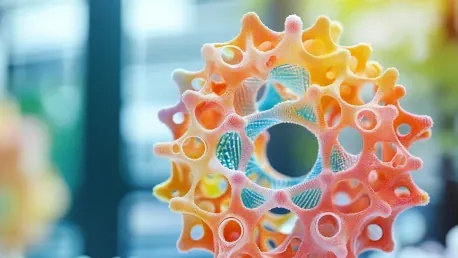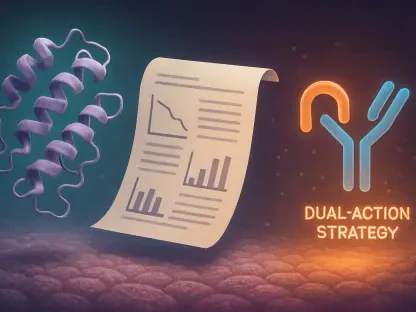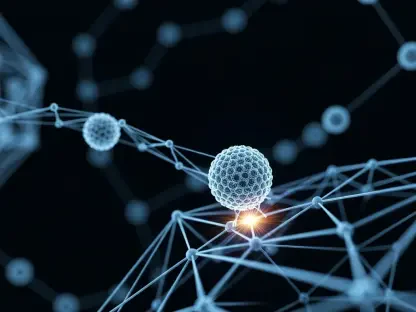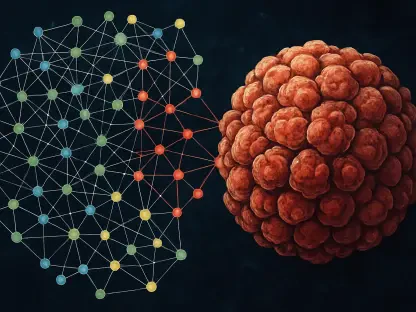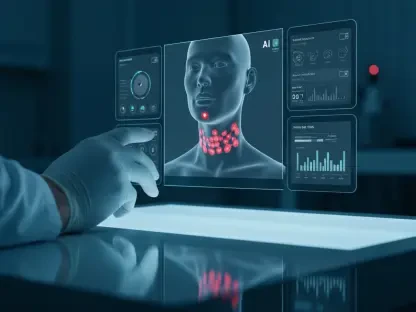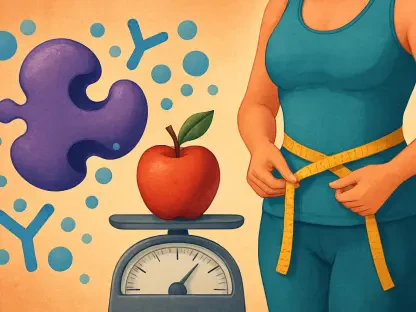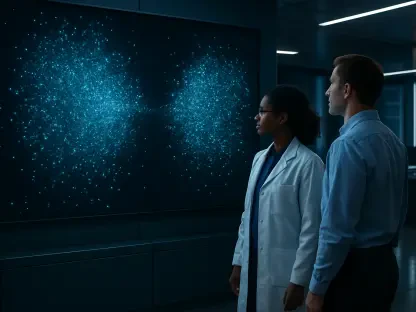The field of synthetic biology has witnessed a groundbreaking development with the advent of “DNA origami,” a technique that allows scientists to control the structure and function of biological membranes. This innovation, spearheaded by Professor Laura Na Liu and her team at the University of Stuttgart, holds immense potential for precise medication administration and other therapeutic interventions. By leveraging advanced DNA nanotechnology, this method facilitates the transportation of significant therapeutic loads into cells, marking a major enhancement in synthetic biology.
The Principle of “Form Follows Function” in Synthetic Biology
The Role of Cell Shape and Morphology
A central theme of this study is the critical role played by the shape and morphology of a cell in its biological function. The principle of “form follows function,” commonly seen in modern design and architecture, is translated to artificial cells, representing a fundamental challenge in synthetic biology. Recent advancements in DNA nanotechnology present promising solutions, enabling the creation of new transport channels sufficiently large to allow therapeutic proteins to pass through cell membranes.
The shape and morphology of living cells are crucial determinants of their function. Mimicking these properties in synthetic cells has been a significant challenge in synthetic biology. The innovative approach taken by Prof. Liu’s team addresses this by creating structures that can adapt and change, just like their natural counterparts. By doing so, they can build synthetic cells that are not only structurally similar to natural cells but also functionally effective in various biological processes, enhancing the potential for practical applications in medical treatments.
Innovative Tools for Controlling Lipid Membranes
Prof. Laura Na Liu, as Director of the 2nd Physics Institute at the University of Stuttgart and Fellow at the Max Planck Institute for Solid State Research, has developed an innovative tool to control the shape and permeability of lipid membranes in synthetic cells. These lipid bilayer membranes enclose an aqueous compartment, serving as simplified models of biological membranes. They are invaluable for studying membrane dynamics, protein interactions, and lipid behavior.
The use of lipid bilayer membranes is crucial in understanding how natural cell membranes work and interact with various proteins and molecules. By controlling these synthetic membranes, researchers can create environments that closely resemble those in living organisms. This allows for precise experimentation and observation of cellular processes, potentially leading to groundbreaking therapies and medical interventions. Prof. Liu’s work in this field has provided a new way to explore these biological phenomena, paving the way for more advanced and effective treatments.
Advancements in DNA Nanotechnology
Development of Functional Synthetic Cells
One of the milestone achievements in applying DNA nanotechnology is in the development of functional synthetic cells. Prof. Liu’s scientific endeavors aim to profoundly impact research and the development of new therapies. Liu and her team have successfully employed signal-dependent DNA nanorobots to enable programmable interactions with synthetic cells. Liu describes their work as a landmark in employing DNA nanotechnology to regulate cell behavior.
These functional synthetic cells can mimic the behavior of natural cells, allowing for detailed studies and experimentation. The ability to program these cells’ interactions opens up numerous possibilities for medical treatments, including targeted drug delivery and precise control of cellular functions. This capability not only enhances our understanding of cell biology but also provides new avenues for developing therapies that can address complex medical conditions more effectively and with fewer side effects.
The Use of Giant Unilamellar Vesicles (GUVs)
Their work involves using giant unilamellar vesicles (GUVs), which are simple structures that mimic living cells, allowing researchers to influence their shape and functionality through DNA nanorobots. Key to this advancement, DNA nanotechnology stands as one of Liu’s main areas of research. Liu is an authority in DNA origami structures, where DNA strands are folded using specifically designed shorter DNA sequences known as staples.
GUVs serve as an essential tool in this research, providing a simplified model that can be manipulated and studied in detail. By integrating DNA nanorobots with GUVs, the team has demonstrated the potential to control cell-like structures dynamically. This capability is significant because it allows for real-time observation and adjustment of cellular processes, a vital feature for developing responsive and adaptable therapeutic strategies that can be tailored to individual patient needs.
Reconfigurable DNA Nanorobots
Transforming DNA Nanorobots
The innovative use of these DNA origami structures as reconfigurable nanorobots allows them to change shape reversibly and influence their immediate environment in the micrometer range. The study has shown that transforming these DNA nanorobots can be connected with the deformation of GUVs and the formation of synthetic channels within the model GUV membranes. These channels enable large molecules to pass through the membrane and can be resealed when necessary.
The reconfigurable nature of these DNA nanorobots is a groundbreaking feature that offers unprecedented control over synthetic cell environments. This ability to deform and reform channels within the membrane dynamically ensures that therapeutic molecules can be released precisely where and when they are needed. This specificity reduces the chances of side effects and enhances the efficacy of the treatment, making it a highly promising approach for future medical applications.
Artificial DNA Structures for Biological Environments
Another paramount aspect of their research is the creation of entirely artificial DNA structures designed for biological environments. Prof. Stephan Nussberger, a co-author of this study, elaborates that DNA nanorobots can be used to design the shape and configuration of GUVs to facilitate the formation of transport channels in the membrane. He emphasizes that the functional mechanism of these DNA nanorobots on GUVs bears no direct biological equivalent within living cells.
This innovative approach implies a significant departure from traditional biological methods, introducing simpler yet effective synthetic platforms. The potential to design these structures with less complexity but equivalent functionality in biological environments is both fascinating and highly promising. It opens up new possibilities for creating efficient and reliable therapeutic delivery systems that can operate seamlessly within the human body, marking a notable advancement in synthetic biology and its applications in medicine.
Implications for Therapeutic Treatments
Cross-Membrane Channels for Molecule Passage
This groundbreaking study presents an essential progression in understanding disease mechanisms and refining therapeutic approaches. The system of cross-membrane channels produced by DNA nanorobots efficiently facilitates the passage of specific molecules and substances into cells. Notably, these channels are sizable and can be programmed to close when required.
The precision offered by these DNA nanorobot-created channels ensures that therapeutic molecules can be delivered directly to the desired cells, thereby maximizing their effectiveness and minimizing potential side effects. This level of control is crucial for developing highly targeted treatments, especially for complex diseases where conventional methods may fall short. The ability to manipulate these channels dynamically further enhances the potential for customized and responsive medical treatments.
Potential for Drug and Therapeutic Interventions
This system, when applied to living cells, can potentially streamline the delivery of therapeutic proteins or enzymes to their cellular targets, hence introducing new methods for drug and therapeutic interventions. Prof. Hao Yan, a co-author of the study, underscores that this approach opens new ways to emulate the behavior of living cells, which could be crucial for developing future therapeutic strategies.
The direct application of this technology to living cells signifies a monumental step forward in medicine. By ensuring that therapeutic agents are delivered precisely where they are needed, the efficiency and effectiveness of treatments can be significantly enhanced. This precision reduces the risk of adverse effects and increases the therapeutic potential, offering hope for more effective treatments for a wide range of diseases, including those currently deemed difficult or impossible to treat with existing methods.
Interdisciplinary Contributions and Future Directions
Collaborative Efforts in Research
This comprehensive summary highlights the interdisciplinary contributions to the research. Laura Na Liu not only serves as the Director of the 2nd Physics Institute at the University of Stuttgart but is also a Fellow at the Max Planck Institute for Solid State Research. Her team comprises researchers from several institutes within the University of Stuttgart, including the 2nd Physics Institute, the Department of Biophysics at the Institute of Biomaterials and Biomolecular Systems, and the Institute of Theoretical Physics IV.
This collaboration brings together expertise from various fields, creating a rich environment for innovation and discovery. By drawing on diverse perspectives and skill sets, the team can tackle complex challenges more effectively, leading to groundbreaking advancements in synthetic biology and therapeutic treatments. The combined efforts of these researchers highlight the importance of interdisciplinary collaboration in pushing the boundaries of scientific knowledge and application.
Global Collaboration and Recognition
The field of synthetic biology has experienced a transformative breakthrough with the development of “DNA origami.” This powerful technique enables scientists to manipulate the structure and function of biological membranes with great precision. Leading this innovation is Professor Laura Na Liu, along with her team at the University of Stuttgart. The potential applications of DNA origami are vast, particularly in the realm of medical treatments and drug delivery. By utilizing advanced DNA nanotechnology, this method allows for the targeted delivery of substantial therapeutic loads directly into cells. This represents a significant improvement in the capabilities of synthetic biology, potentially revolutionizing how medications are administered. DNA origami not only enhances the efficiency of drug delivery systems but also opens the door to new therapeutic interventions and biotechnological advancements. These innovations may lead to more effective treatments for a range of diseases, demonstrating the immense potential of synthetic biology and DNA nanotechnology in modern medicine.
